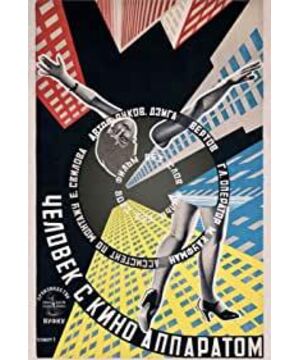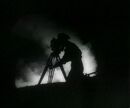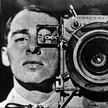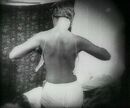There is no clear theme, no complete narrative, obviously avant-garde montage and editing skills, the interlacing of variable-speed lenses and virtual reality, it is hard to imagine that this is a movie from 100 years ago, it is too shocking, and you can see the real editing at that time. The only thing is to cut it with scissors, then stick it with glue, and double exposure is also to superimpose two films together to see the most original film. Yes, I think this is a movie. Although there is no plot and no fiction, the editing skills used in this movie can be said to be too advanced, and the effect of the current movie in the later stage is only the same, of course, excluding special effects.
This experimental work aims to create a film genre completely separated from drama and literary language, and is an experimental film with avant-garde theory. Vertov sees the camera as a more perfect eye than the naked eye, which is his theory of the "cinematic eye", which spans subject, medium and object. From time to time in the film an eye can be seen in the camera lens, as if it were the eye of the audience watching the film, as if it were our eye watching the film. Among them, there is a woman washing her face and blinking her eyes, opening and closing the blinds, the telescopic lens and the alternation of the virtual and real scenes, all of which remind us of the subjectivity of the camera. Taking the camera as the main body, praising the film's eyes and giving them the anthropomorphic nature of subjectivation are inseparable from the blind worship of science and machinery that began in Europe at that time. At the beginning of the 20th century, the industry was in a period of rapid development. People saw that machines created wealth, surpassed manpower, and gradually developed a sense of beauty in concept. This is reflected in the dazzling dance of machines in the film. The director focuses on the industrialized Soviet Union, showing orderly turning gears, towering chimneys and roaring trains. The influence of avant-garde ideology. The October Revolution overthrew the bourgeois regime, ignited the spark of idealism for the passionate youth, and at the same time left a vacuum of power system for the development of art. Various schools and theories of avant-garde art were able to develop during that period. Vertov also put forward his "movie eye" theory during that period.
This is just my brief understanding of the theory of the film eye, and I will experience it after reading Vertov's "The Film Eye".
View more about Man with a Movie Camera reviews







